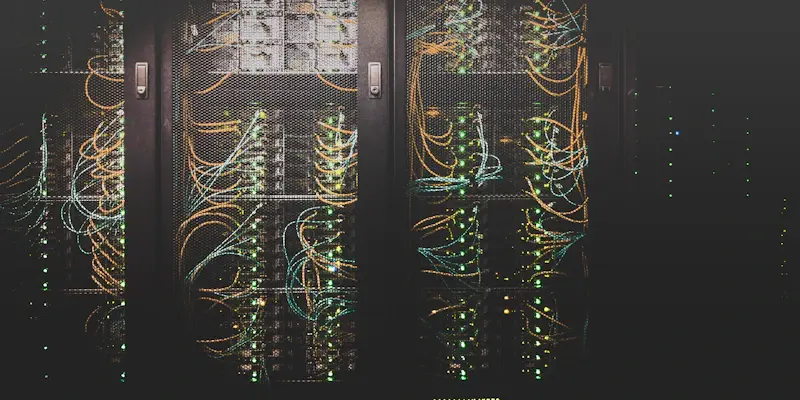The rapid growth and expansion in the hyperscale data center industry are largely driven by the increasing demand for AI-based cloud services. Key players in the market, such as Amazon Web Services (AWS), Microsoft, and Google, are at the forefront of this transformation, leading to significant changes in data center capacity and infrastructure. The increasing reliance on artificial intelligence for a slew of applications—from machine learning and natural language processing to complex data analytics—has spurred a parallel demand for powerful data center infrastructures capable of handling these advanced computational needs.
Growth in Data Centers
The total number of hyperscale data centers has seen a notable increase, with the count rising from 992 at the end of 2023 to 1,136 by the end of the following year. This growth is spearheaded by major cloud service providers like AWS, Microsoft, and Google, who collectively manage 59% of the hyperscale data center capacity. Along with the rise in numbers, the average size of new data centers has also expanded, resulting in a quicker escalation in total hyperscale capacity. This surge is not only driven by the sheer volume of data processed but also by the necessity to facilitate advanced AI capabilities, requiring extensive computational resources.
The trend indicates a shift toward larger data centers, which now host significantly higher compute densities than in previous years. This increase in density is largely attributed to advancements in infrastructure technology that allow for intensified computational power within smaller physical footprints. As a result, hyperscale data center operators are able to augment their existing capabilities without proportionately increasing the physical size of the facilities. These advances are paving the way for more efficient and powerful data processing capabilities essential for supporting an array of AI-driven applications.
AI-Driven Demand and Infrastructure Investments
A significant factor fueling this expansion is the surging demand for AI services, prompting substantial investments in AI infrastructure. AWS, Microsoft, and Google are channeling tens of billions of dollars into capital expenditures aimed at enhancing AI infrastructure. This trend reflects the critical importance of AI in the future landscape of cloud computing. AI-centric workloads demand extensive computational resources, vast memory capacity, and high-speed connectivity, all of which necessitate robust and scalable data center infrastructures capable of meeting these intense requirements.
Technological advancements, particularly in chip technologies, play a crucial role in supporting the heightened computational demands of AI applications. Nvidia, a key player in this arena, has developed groundbreaking platforms like the Blackwell Ultra, which significantly boost compute and memory capacity, and is poised to introduce the Vera Rubin processor to further enhance AI capabilities. The enhanced chip technologies serve to further augment the computational prowess of hyperscale data centers, ensuring they can effectively manage the increasing workloads driven by AI applications across various sectors.
The investments in AI infrastructure are setting the pace for the industry’s future, as companies seek to leverage the benefits of AI to optimize operations, drive innovation, and maintain a competitive edge. Capital allocations towards state-of-the-art infrastructure underline the strategic importance placed on enabling advanced AI capabilities. By fortifying their data center capacities, AWS, Microsoft, and Google are not just addressing current computational needs but are also preparing to meet future demands poised to skyrocket as AI continues to integrate deeper into technology ecosystems.
Strategic and Collaborative AI Initiatives
Collaborative projects further underline the industry’s focus on AI infrastructure. The Stargate initiative, led by OpenAI and involving partners like Oracle, SoftBank, and MGX, represents a $500 billion investment in AI infrastructure, with key technology contributions from Nvidia, Microsoft, and Arm. This collaboration highlights the collective effort to push the boundaries of AI computing. Such joint ventures are critical for fostering innovation and sharing the substantial financial and technical burdens associated with deploying cutting-edge AI technologies on a large scale.
Simultaneously, the trend of building larger, higher-density facilities is coupled with the development of smaller regional centers aimed at improving proximity to customers. For instance, Oracle’s strategy exemplifies this approach, as it rapidly expands its global cloud coverage despite having a smaller market share compared to the leading cloud providers. This dual strategy acknowledges the need for both expansive, powerful core data centers and smaller, strategically placed facilities that bring computational power closer to end-users, thereby reducing latency and enhancing service delivery.
Collaborative inter-industry initiatives like Stargate are essential for building the next generation of AI-optimized data centers. OpenAI’s position at the helm, supported by stalwarts like Oracle and SoftBank, indicates a concerted push towards realizing a new era of AI innovation. Technology providers like Nvidia and Arm, with their contributions in chip and architecture advancements, play crucial roles in propelling these initiatives forward. The collaboration underscores the recognition that achieving meaningful advancements in AI infrastructure requires cohesive efforts and shared expertise.
Future Trends and Industry Projections
The rapid expansion in the hyperscale data center industry is primarily fueled by the growing demand for AI-driven cloud services. Leading the charge in this industry transformation are major players like Amazon Web Services (AWS), Microsoft, and Google. This shift is causing substantial changes in data center capacity and infrastructure. As artificial intelligence becomes increasingly integral to a wide range of applications—spanning from machine learning and natural language processing to sophisticated data analytics—the need for powerful and efficient data center infrastructures accordingly grows. These advanced computational requirements push the development and scaling of data centers to keep up with the technological advancements and the exponential rise in data generation and processing. The emphasis on AI technology means that data centers must continually evolve to support the hardware and software demands, ensuring they provide the necessary computational power and storage to handle these cutting-edge applications.

